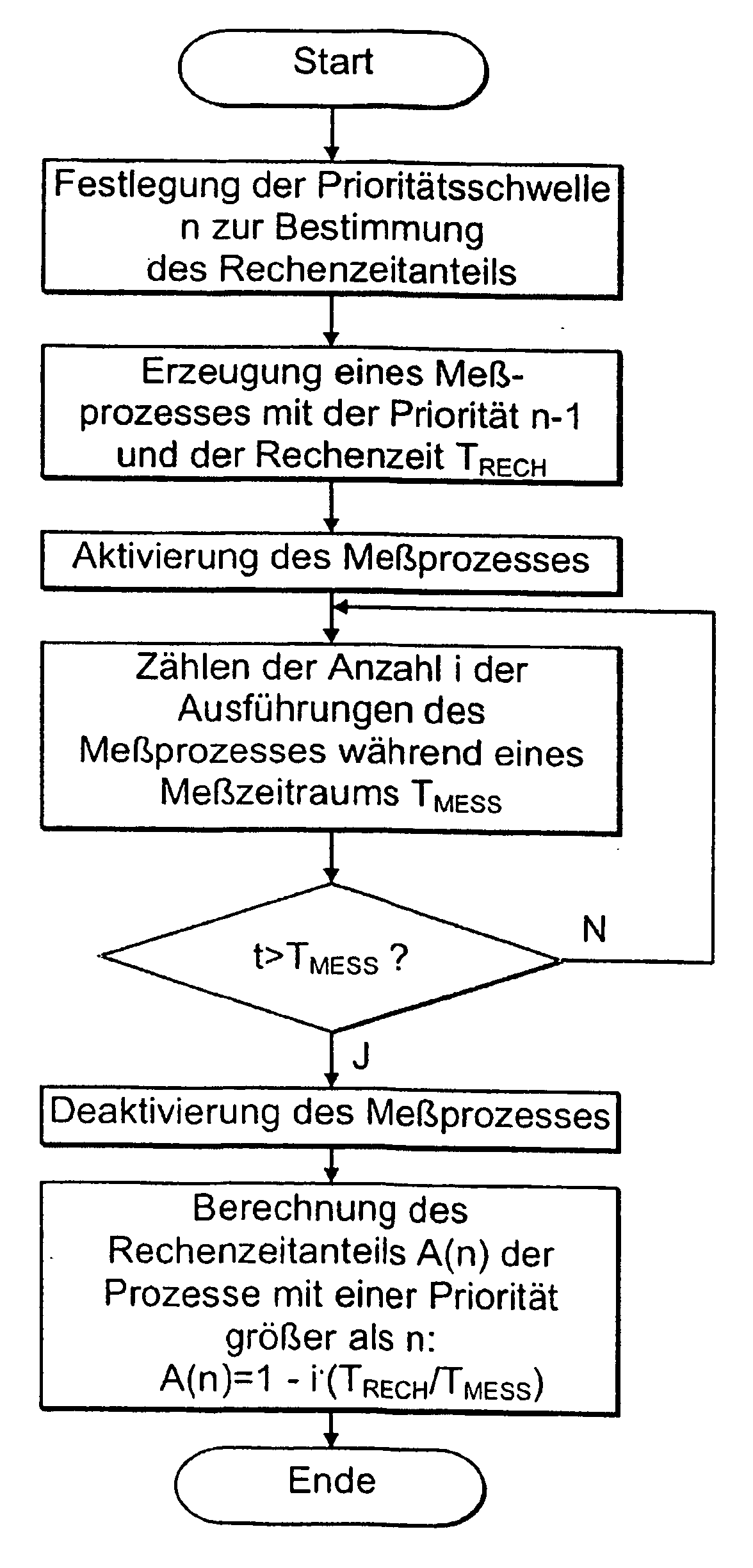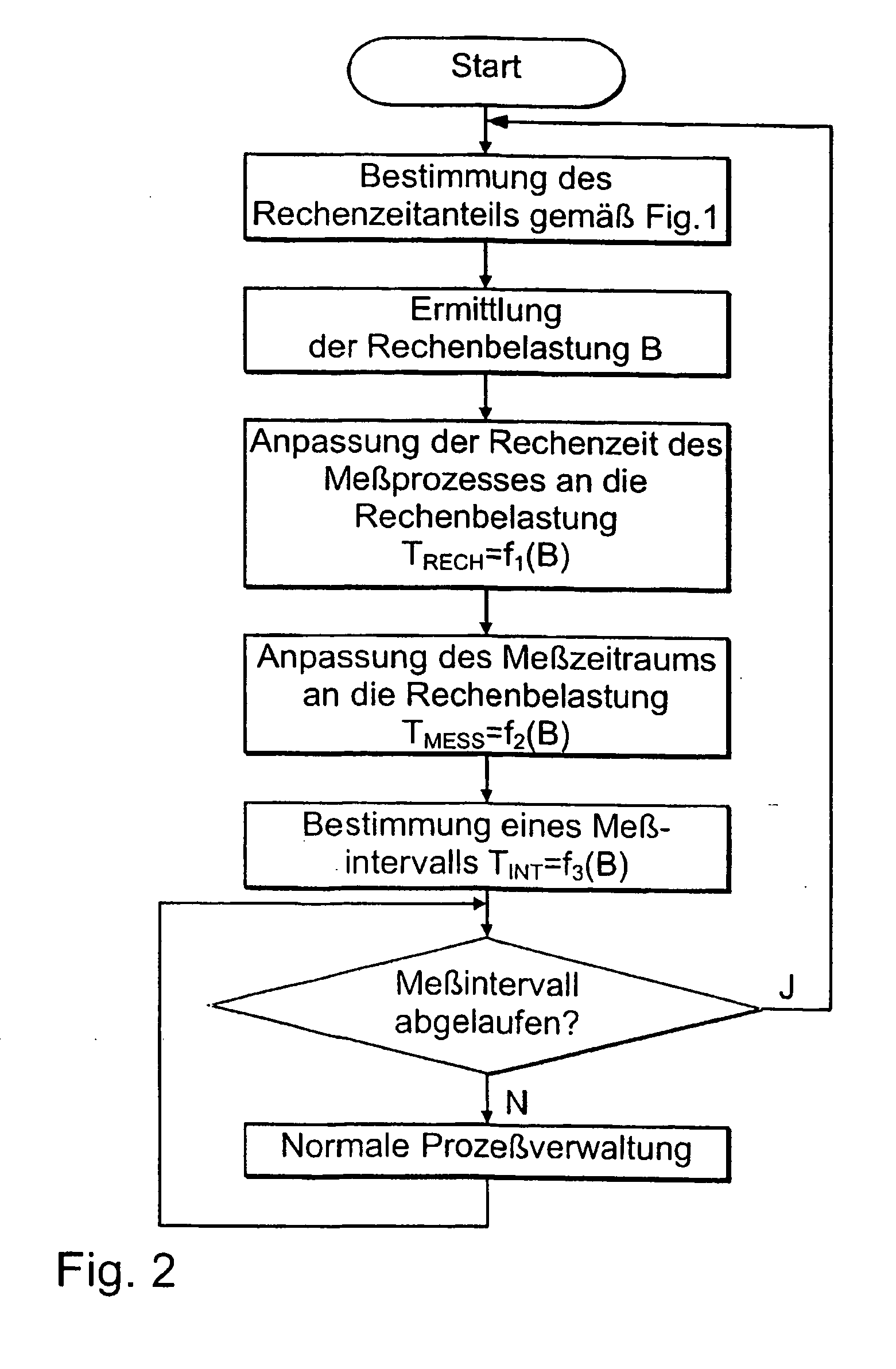Method for determining priority-dependent computing-time distribution in a priority-controlled multiprocess computing system
- Summary
- Abstract
- Description
- Claims
- Application Information
AI Technical Summary
Benefits of technology
Problems solved by technology
Method used
Image
Examples
Embodiment Construction
[0027] The flow diagram which is shown in FIG. 1 allows the specification of the computing-time portion which is expended in a multiprocess computing system by processes 1 whose priority is greater than or equal to a priority threshold n as illustrated schematically in the time diagram in FIG. 3.
[0028] In order to achieve this, the priority threshold n is initially preset in a first step, wherein the priority threshold n is freely selectable so that the computing-time distribution can be specified depending on priority for different priorities.
[0029] A measuring process 2 is then generated whose priority is PRIOMESS=n−1. This means that all processes whose priority is greater than or equal to the priority threshold n take precedence over the measuring process 2. The measuring process 2 has a preset computing time TRECH in this context, so that the computing time which is expended by the measuring process 2 can be specified easily. Moreover, after its execution, the measuring proce...
PUM
 Login to View More
Login to View More Abstract
Description
Claims
Application Information
 Login to View More
Login to View More - R&D
- Intellectual Property
- Life Sciences
- Materials
- Tech Scout
- Unparalleled Data Quality
- Higher Quality Content
- 60% Fewer Hallucinations
Browse by: Latest US Patents, China's latest patents, Technical Efficacy Thesaurus, Application Domain, Technology Topic, Popular Technical Reports.
© 2025 PatSnap. All rights reserved.Legal|Privacy policy|Modern Slavery Act Transparency Statement|Sitemap|About US| Contact US: help@patsnap.com



